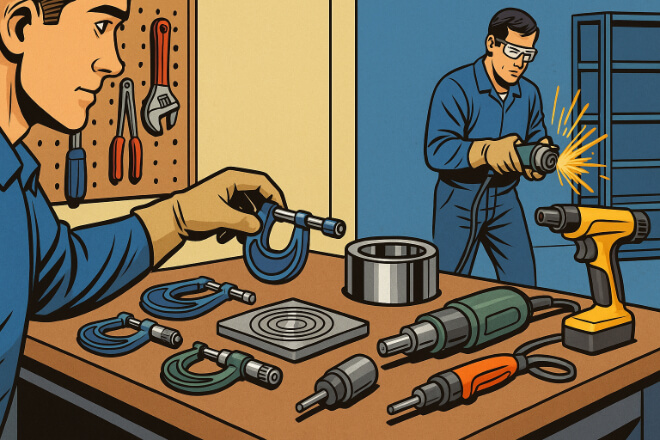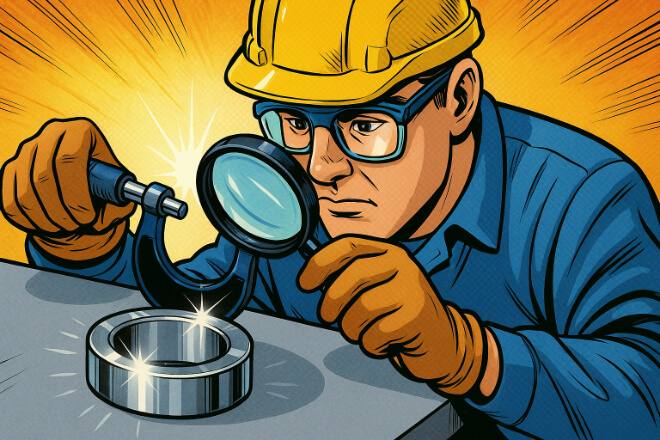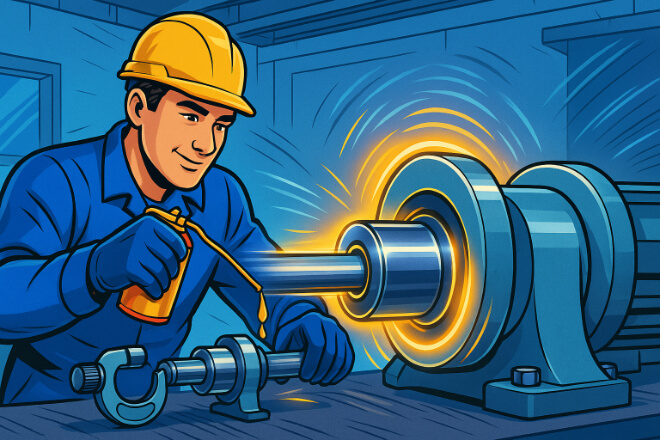Tungsten carbide bushings are designed to handle extreme wear, friction, and pressure in pumps, compressors, and rotating machinery.
However, even the most durable bushings eventually wear down after long service. When this happens, replacing the bushing is not always the fastest or most cost-effective option.
In many cases, field repair can restore worn tungsten carbide bushings to near-original performance, saving both time and money.
This article explains practical field repair methods, when to use them, and best practices for maintaining performance after repair.
Understanding Wear in Tungsten Carbide Bushings

Tungsten carbide is extremely hard, but it can still suffer from wear due to continuous friction, corrosion, or improper lubrication.
Identifying the type and cause of wear helps determine which repair method is suitable.
1). Common Wear Types
Abrasive Wear: Caused by particles trapped between the shaft and bushing surface.
Corrosive Wear: Occurs when chemicals or moisture attack the cobalt or nickel binder.
Adhesive Wear: Due to insufficient lubrication, causing metal-to-metal contact.
Erosive Wear: High-velocity fluids or particles gradually remove material from the bushing.
2). Why Wear Happens
Poor lubrication or contamination
Shaft misalignment
Excessive temperature or load
Incompatible materials
Identifying these issues early helps prevent severe damage that cannot be repaired in the field.
When to Choose Field Repair Over Replacement
Field repair is ideal when the bushing damage is minor or moderate and when the equipment must return to operation quickly.
Replacing bushings may take longer, especially if custom machining or overseas shipping is involved.
Repair vs. Replacement Guidelines
| 상태 | Recommended Action | 이유 |
|---|---|---|
| Minor wear or scratches | Field repair | Can be polished or relapped on-site |
| Moderate wear or surface pitting | Field repair or partial resurfacing | Requires minor grinding and re-lapping |
| Severe cracking or deformation | Full replacement | Cannot restore structural strength in field |
Field repair should always be done by trained personnel using proper tools and safety precautions to avoid damaging the bushing further.
Common Field Repair Techniques

Field repair methods depend on the extent of wear and the type of bushing. Here are the most effective and commonly used techniques:
1). Polishing and Lapping
This is the most common method for light wear or surface damage.
Process: Fine abrasives are used to remove minor scratches and restore surface finish.
Result: Restores smoothness and reduces friction.
Tools Needed: Lapping plates, polishing compounds, soft cloths.
2). Grinding and Honing
Used for moderate wear or uneven surfaces.
Process: Diamond grinding wheels or honing tools remove worn material to restore dimensional accuracy.
Result: Ensures tight tolerances and smooth operation.
Caution: Must be performed carefully to avoid overheating and micro-cracks.
3). Hardfacing or Coating
When wear is significant, applying a new protective layer on the worn surface can extend service life.
Methods: HVOF (High-Velocity Oxygen Fuel) coating or plasma spray.
Benefit: Adds a new tungsten carbide layer, restoring the original hardness.
4). Replacement of Binder-Damaged Areas
If corrosion affects the cobalt or nickel binder, partial recoating or chemical cleaning may restore performance.
Note: This method is suitable for minor binder corrosion only.
Tools and Equipment for Field Repair

Using the right tools ensures the repair process is precise and effective. Improper tools can worsen the damage or cause dimensional inaccuracies.
Essential Tools Include:
Portable grinding and polishing machines
Lapping plates with fine abrasives
Ultrasonic cleaning units
Precision micrometers and calipers
HVOF spray equipment (for surface restoration)
Proper training for technicians is critical to achieving consistent repair quality.
Inspection and Quality Verification After Repair

After repair, each bushing must undergo thorough inspection to confirm it meets the original performance specifications.
Key Parameters to Check:
Surface Finish (Ra): Should be within the original range (typically Ra ≤ 0.05 μm).
Dimensional Accuracy: Measure internal and external diameters with micrometers.
Roundness and Concentricity: Check for proper alignment and uniformity.
경도: Verify restored coating hardness is between 1400–1600 HV for tungsten carbide.
Inspection ensures the bushing is safe for reinstallation and operation under load.
Preventing Future Wear After Field Repair

Preventive actions are just as important as repair. Extending the life of restored tungsten carbide bushings reduces downtime and overall maintenance costs.
Best Practices:
Maintain Proper Lubrication: Regular lubrication reduces friction and wear.
Ensure Correct Alignment: Misalignment causes uneven loading and premature failure.
Control Operating Temperature: Use cooling systems to avoid thermal damage.
Keep Fluids Clean: Contaminated fluids accelerate abrasive wear.
Implementing these preventive measures can extend the service life of both repaired and new bushings.
결론
Field repair of worn tungsten carbide bushings provides a practical, cost-effective alternative to full replacement.
Techniques such as polishing, lapping, grinding, and coating can restore performance quickly and efficiently.
Regular inspection, preventive maintenance, and proper operating conditions are key to maximizing the lifespan of these critical components.
With the right tools and skilled technicians, companies can keep equipment running smoothly and minimize costly downtime.
회사에 대한 자세한 내용을 알고 싶으시면 언제든지 문의해 주세요. 문의하세요.
